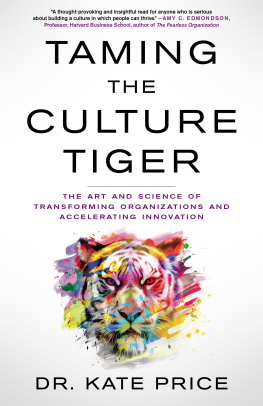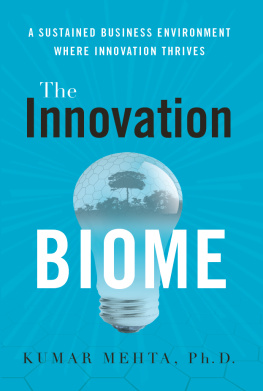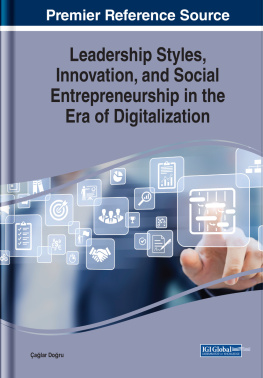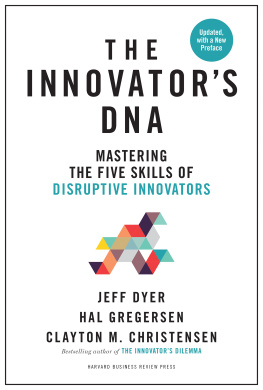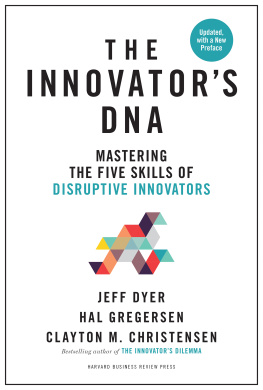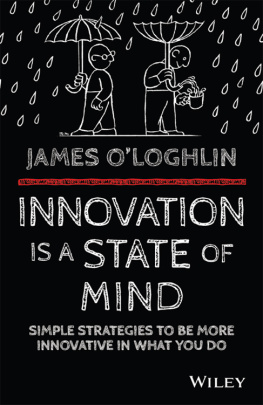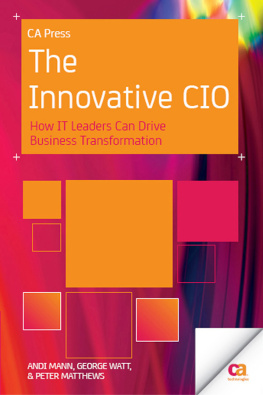
Innovation Soup
Innovation Soup
A Recipe for Organizational Success
Sanjay Puligadda, PhD and Don Waisanen, PhD

Innovation Soup: A Recipe for Organizational Success
Copyright Business Expert Press, LLC, 2023.
Cover design by Sanjida Smrity
Interior design by Exeter Premedia Services Private Ltd., Chennai, India
All rights reserved. No part of this publication may be reproduced, stored in a retrieval system, or transmitted in any form or by any meanselectronic, mechanical, photocopy, recording, or any other except for brief quotations, not to exceed 400 words, without the prior permission of the publisher.
First published in 2022 by
Business Expert Press, LLC
222 East 46th Street, New York, NY 10017
www.businessexpertpress.com
ISBN-13: 978-1-63742-305-9 (paperback)
ISBN-13: 978-1-63742-306-6 (e-book)
Business Expert Press Human Resource Management and Organizational Behavior Collection
First edition: 2022
10 9 8 7 6 5 4 3 2 1
Description
Not your average cookbook. This is a research-based recipe for innovation!
This book is for anyone wanting to kick-start innovation in their organization. It is ground-breaking in two ways:
It is based on data, combining empirical research, literature reviews, business cases, and interviews.
It tells a story of two friends in diametrically opposite business predicaments due to Covid. Their story is complex and layered, making for an engaging reading.
For too long, innovation culture has been amorphous. InnoQ, built on years of rigorous research, breaks innovation into 11 dimensions that can be measured, tracked, and improved. We share real world data and examples showing the power of the 11 dimensions and provide concrete ways to improve on them. The pandemic has fundamentally changed the way organizations do business for the next many yearscreating a culture of innovation is now more important than ever.
This book is perfect for leaders, innovators, managers, and students.
Keywords
innovation; organizational culture; measurement; collaboration; empathy; diversity; creativity; high-performing organization; improvisation; leadership
Contents
This book delivers a rigorous, data-based approach to building a culture of innovation in your organization. To make the extensive research and the data behind this book palatable and digestible, we have intentionally packaged the information in an engaging story format. The book begins with the story of Peter and David, two friends who find themselves in diametrically opposite business predicaments due to the Covid pandemic, because of differences in innovation culture. Their story is layered and complexits a tale of frustration, friendship, rivalry, and respect. An innovation consultant, Laura, could be a beacon of hope. But is she able to help? We invite you to read on to find out.
We use the story of Peter, David and Laura, as it unfolds, to layer in an exegesis of the 11 dimensions of innovation culture. We explain the extensive research that went into a diagnostic tool for measuring innovation culture called the InnoQ and describe how it can be used to improve innovation culture. We share real world data showing the power of the 11 dimensions and how they can be used to benchmark innovation culture. We also suggest concrete ways to make changes and improve on the dimensions to get your innovation soup right.
For too long, innovation culture has been amorphous and hard-to-define. Grounded in research, this book offers a straightforward and practical framework for assessing, tracking, and improving innovation culture. We have packaged its contents in an easy-to-read format, focusing on how to implement this workstarting tomorrowabove all else.
As a McKinsey report recently stated, prioritizing innovation is the key to unlocking postcrisis growth, with a survey finding that most (90 percent) managers are convinced that the pandemic will fundamentally change the way they do business for the next many years.and building an organizations innovation capabilities is now more important than ever.
There are many books on innovation. There are three ways this book is different:
It is based on a thorough data-collection and analysis conducted by the first author, case examples from companies, and the research and experiences of both authors.
Every chapter starts in a novel, narrative format designed to get readers attention using a continuing story that makes the information relatable and memorable.
We know how busy you are! We are too. As such, we have attempted to keep everything brief, compelling, and practical. While packing in information along the way, our chapters
are short, and get to the point with key takeaways and action items provided.
.
15 years, David!
I know! They were fantastic years Phil! I cant thank you enough for all those years of hard work, said David, looking into Phils eyes.
You know our situation, he continued with a tone of desperation and despair. I really dont have any other choice. I am sorry. He meant it. He really liked Phil. He hated letting anyone go, much less Phil. Over the years, their families had gotten to know each other. He and Phil also shared a passion for beer. They would often head out after work to try out a new brewery and had become great friends over many a pint.
They were seated in Davids office, a well-appointed room on the c-suite corner of the fourth floor of an austere building that served as corporate headquarters for his company. A balding man in his 50s, David was dressed in a tie, khaki pants, and a pressed shirt. He had kind eyes, a bulging mid-section, and a warm, effusive manner. He was liked by his employees, although he often wondered if they respected him.
There was a lot Phil wanted to say. He was experiencing a range of emotions: anger, frustration, disappointment, and hurt. He was hurting more than anything else. He had given the best years of his life to this company and now he was just being let go by someone he thought was his friend. He was seething but looking across the table he could feel Davids discomfort. Deep down he knew David hated doing this but had no choicegiven the circumstances, this wasnt a surprise. He just couldnt bring himself up to saying anything. He just got up and left the room, slamming the door on his way out.
This was the third team member David was letting go this week. Covid-19 had devastated his small manufacturing business that made kitchen supplies. His customers customers kept away almost completely, which meant his customers were keeping away from him. It was fast. His orders just melted away and he just couldnt afford his team anymore. Like most small businesses (< 500 employees), he had less than 15 days of cash reserves. Credit also became tighter. The situation had lasted much longer than David had anticipated. Although he was getting some government loans from the pandemic, he still had to cut his labor.
He had inherited this business from his father, Steve, a second-generation Greek immigrant who had worked hard to establish this company. A hard working, ambitious man, Steve had an iron grip at work and home. David grew up in his shadow. Steve was regimented and set in his ways, single handedly building his business from scratch. Up until his death a year ago, his footprint could be seen in every aspect of the business.


